Gravitas
Gravitas: a work of sculpture by Keith Harder. Located in a farmer’s field in Southern Alberta, it’s made of bits and pieces of vintage World War Two Anson aircraft. From the ground it looks like a scrap pile with no order or layout. Just a jumble of old planes forgotten and left to rot away, some mere skeletons, others more complete, but all seemingly junk. From the air however, the intentions of its creator become clear. The remains are laid in an exacting fashion in a circle, each airframe being aligned with a point of the compass, native grasses forming a perfect outline of any missing pieces.
It’s twelve planes in a circle. To really appreciate this, it must be seen from the air. Irony, we had to view it from the ground.
Each viewer is left to freely interpret the meaning, so make of it what you will. Good art, of course, is meant to challenge conventions and make you think as an individual. They are war planes but is it about war? They’re old and falling apart, so is the theme decay or even death? Or are we reading too much into it? Why the precise layout? Is it something spiritual? Something akin to a Native Medicine Wheel? The answer, we’ll leave it up to you. Ourselves, we can’t help be reminded of the Knights of the Round Table, a circle of equals in conference. They’re old soldiers awaiting a call to duty. And glory.
The brainchild of Keith Harder, painter, illustrator, digital imaging creator, and of course sculptor, Gravitas dates back to 2009. Produced in cooperation with the Bomber Command Museum of Nanton, the Ansons came from their collection and being surplus to their needs, were donated to the project. They’ve been picked clean of any useful parts (and helped in the restoration of another Anson), so in that sense were perfect for this display. They could be used here or just languish away in the museum’s storage lot, unseen and unwanted. This piece saved them from being forgotten. In spite of the fact that none are anywhere close to complete airframes, they’re still recognizable for what they are.
To construct the display, a large round gravel bed was laid out and the location of every plane marked. Each was then craned into place. It all sounds simple, but our artist demands a great degree of precision, so this last step took time so it was done right. Each is withing a hair-width of being perfectly aligned. The exacting silhouette of a complete plane – recall none are anywhere close to that state – were planted with tall grasses, which are allowed to grow into the remains. The centre of the circle and a band on the outside edge also got grass. Other areas are bare gravel.
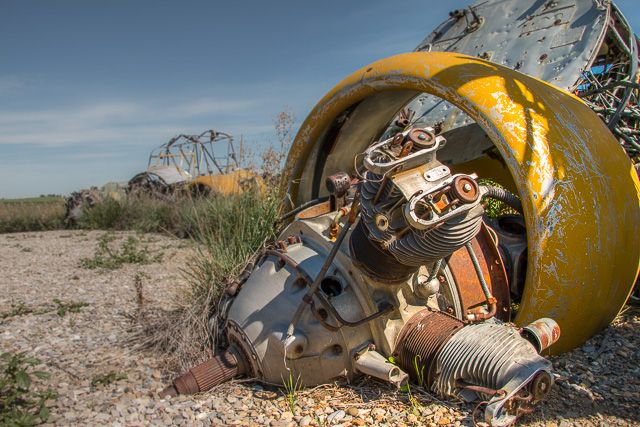
Gravitas, a work of art made from World War Two era airplanes.
Since the display is close to the road it’s seen by a fair number of people passing by (but, reminder it’s on private property). Most I bet scratch their heads wondering what it is. To know it, is has to be viewed from above. People in passing planes see it. Drones can see it. Towering basketball players with stepladders might try, but they won’t see it. An uber-tall selfie stick is not enough. You need some serious height to take in all that it is.
Most air traffic here is small planes coming and going from a number of rural airports nearby. Traffic to and from Calgary might be too high at this point to really notice the display – is it even on the normal routes? So, in the true form intended by the artist, the sculpture is actually seen by a limited number of eyes. Does that make it no less important? No way! It makes it all the more special.
Still, from the ground we were able to appreciate the bits and pieces that make it up. Once we got a lay of the land and wandered about, we could imagine it.
The Anson design dates back to the mid-1930s. It served many roles, light bomber, patrol aircraft, but was best suited as an air trainer. Produced by the Avro firm in the UK, with the war in Europe demand increased to a to the point that a Canadian factory was established, early 1940s in Ontario. This new company, Federal Aircraft, built about twenty percent of the total number of Ansons built. The firm De Haviland Aircraft Canada was also involved in production and built or rebuilt additional planes but in smaller numbers. Interestingly, we found a De Haviland makers plate on one plane – a mystery: it mentions a factory in West Toronto whereas the firm, as best we know, did all of its work in Downsview, north of Toronto.
In total over eleven thousand Ansons were built across several series, two thousand plus of them in Canada. Production spanned the 1930s-1950s in the UK, 1941-1945 in Canada. Ones made here are mostly Series (Mark) II.
The Mark II Anson has a steel skeleton making up the the body and tail. Some sections were clad in metal, others fabric. Wings were fabric covered wood. A large plywood spar anchors the wings to the body. A pair of radial engines (from the firm Jacobs on most Canadian models) provided power to wood propellers (on Canadian models). The length of the craft is some twelve metres and change, wingspan seventeen metres, with an operating weight of some thirty four hundred kilograms – roughly equal to the weight of the wine empties here at BIGDoer HQ. Cruising speed was two hundred and fifty kilometres per hour.
The Anson carried a three or four man crew. Controls were primitive, people comforts unheard of – look at that seat! Cargo space was minimal. Some not used as trainers might have a basic armament or be outfitted as light bombers but it was as trainers they excelled. The Anson was named after a British Admiral from the 18th century. He’d be proud no doubt.
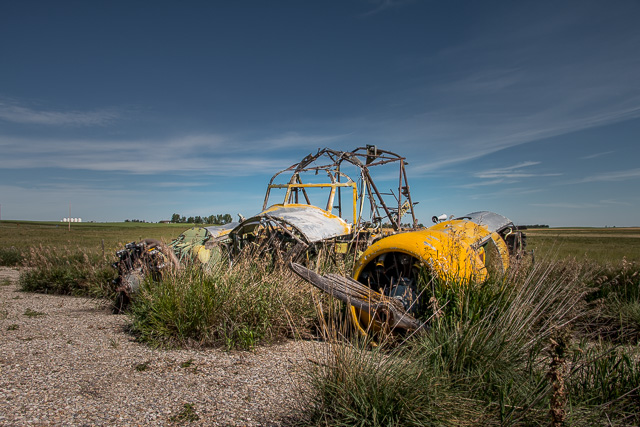
Each airframe is aligned to a point of the compass.
Most Anson trained pilots went on to fly in bombers. The planes were also used for navigational instruction and other miscellaneous teaching roles. It functioned well in its role and was easy to fly and forgiving and simple to maintain and reliable. In many ways however, even early into the war, it was an outdated anachronism. But it worked, it worked well. In its own special way it helped the allies win the conflict, even if most of its contribution could be seen as behind the scenes in nature. No little boy ever dreamed of being an Anson pilot. Little respect, no recognition, but it did the job
The Anson was the backbone of the Commonwealth Air Training Plan. Pilots destined for the European Theatre were hands-on educated at any number of airbases scattered all over Southern Alberta (some of these old airport remain). Over twenty thousand aircrew, from all over the Commonwealth, received their training on Ansons. Wandering about the remains, we can’t help think of those brave souls who then went on to fly in the war and didn’t make it back. A sombre connection.
After the conflict, most of these planes were sold as scrap with many being snapped by local farmers who salvaged parts from them for other uses (whoa, just reinforced that frugal farmer stereotype). Often the the remains were then dumped in the back forty, along with old trucks, retired tractors and other metal bits. Junk rarely left the farm. As such, many old airframes survived fairly intact. Later museums and collectors would acquire many.
The Bomber Command Museum of Canada in Nanton (a bit to the south) dates back to the 1980s and is home to several old war planes including an Anson currently undergoing restoration. They have a fair stockpile of parts planes in their inventory which to pull from.
Gravitas: (Oxford Dictionary – Noun) Dignity, seriousness, or solemnity of manner.
The artist’s website…
Keith Harder.
The museum’s website…
Bomber Command Museum of Canada.
Posts you’re sure to like…
Rothney Astrophysical Observatory.
In Event of Nucular Attack!
The dome buildings and an ancient boxcar.
If you wish more information on what you’ve seen here, by all means contact us!
Date: August, 2016.
Location: South of Calgary Alberta.
Article references: Artist Keith Harder, Bomber Command Museum of Canada Nanton Alberta, Book: Canadian Warplanes by Harold A. Skaarup.
Gravitas is on private property, BIGDoer.com visited with permission. The public can view it from the road (sort of) or better still from the air.
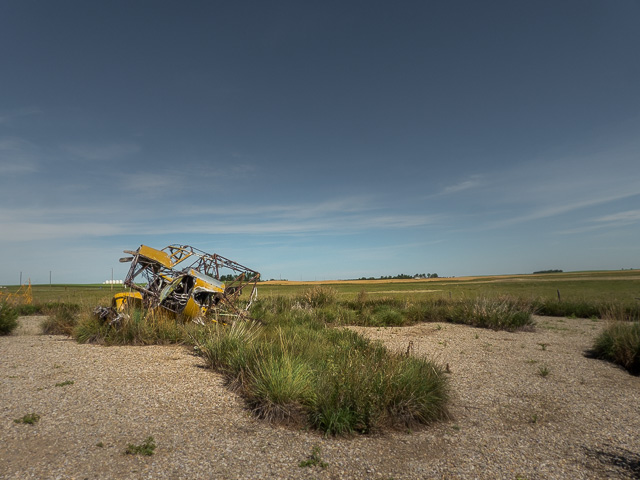
Native grasses grow as the outline of missing pieces.
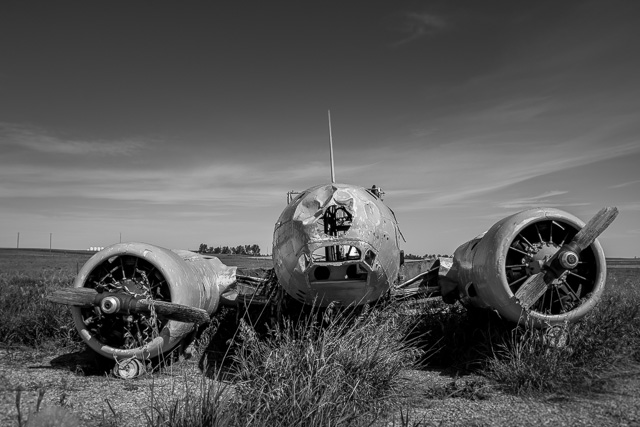
Every plane is an Avro Anson.
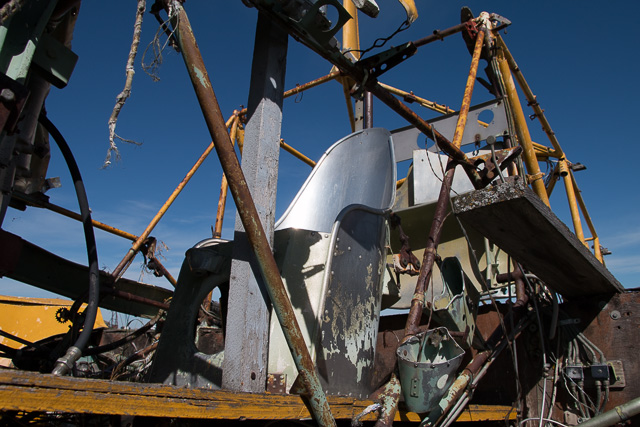
A cockpit seat.
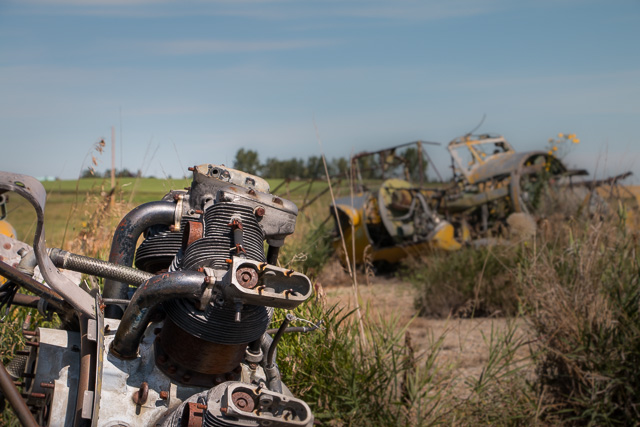
The location here: a farmer’s field near Cayley Alberta.
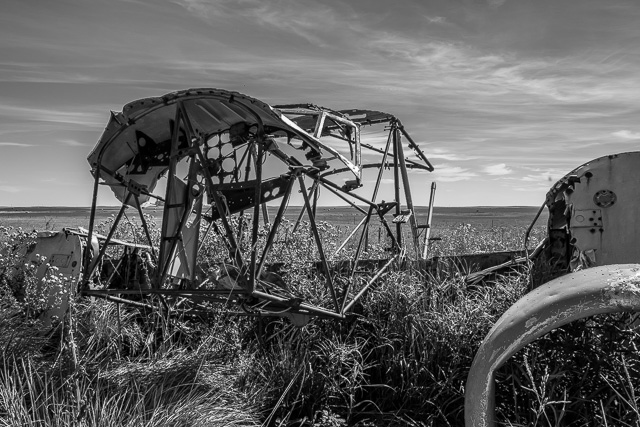
Some airframes are mere skeletons.
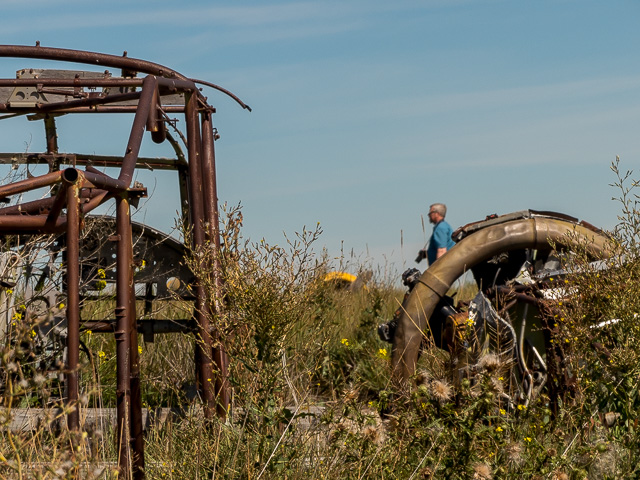
Artist and creator Keith Harder.
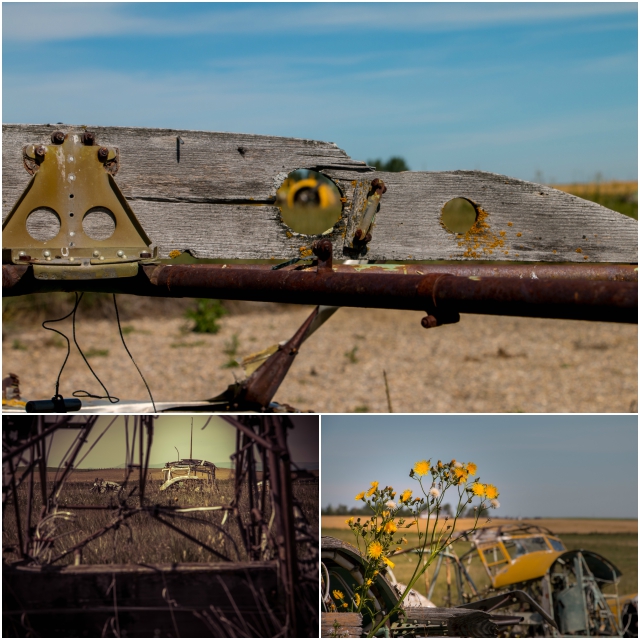
Little details…
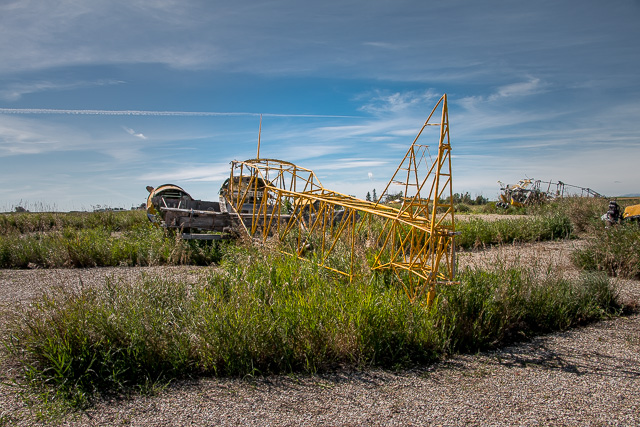
All aircraft came surplus from the Bomber Command Museum Nanton.
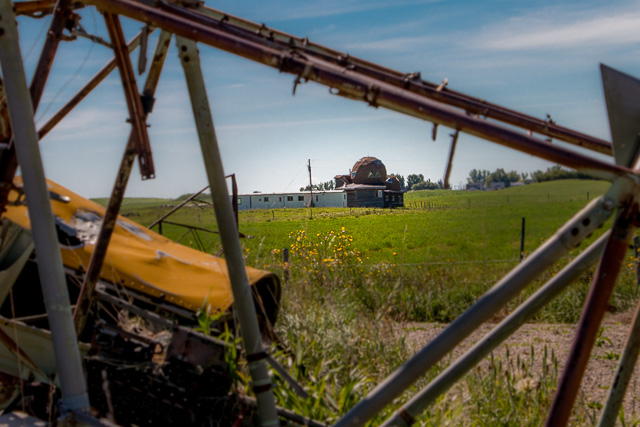
Visited a couple weeks later, the funky Dome Home.
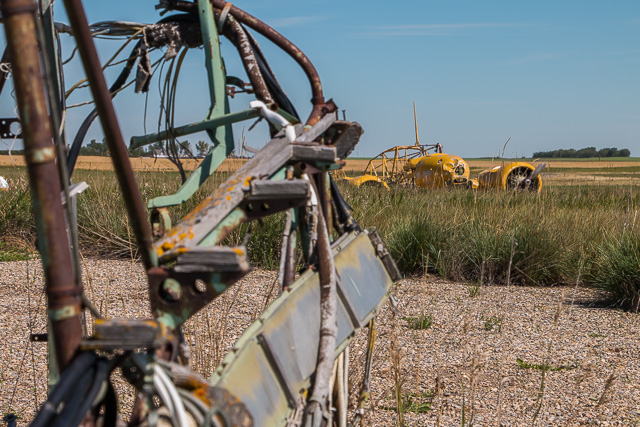
To really appreciate the piece it has to be seen from the air.
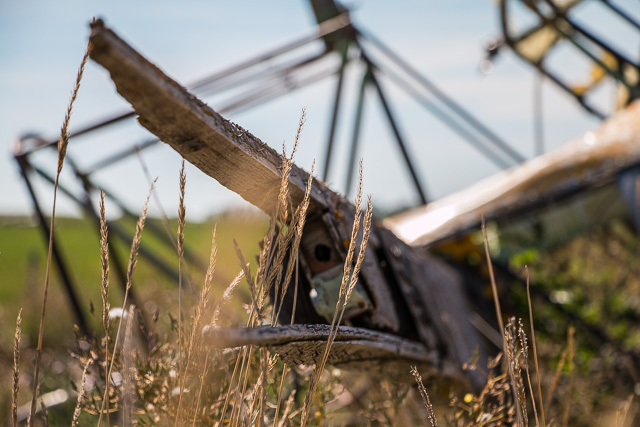
Wood was used in many parts of the plane – a wing spar is seen here.
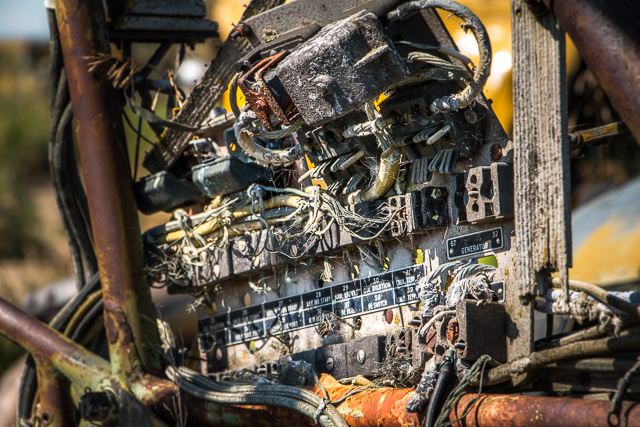
The jumble of an electrical panel.
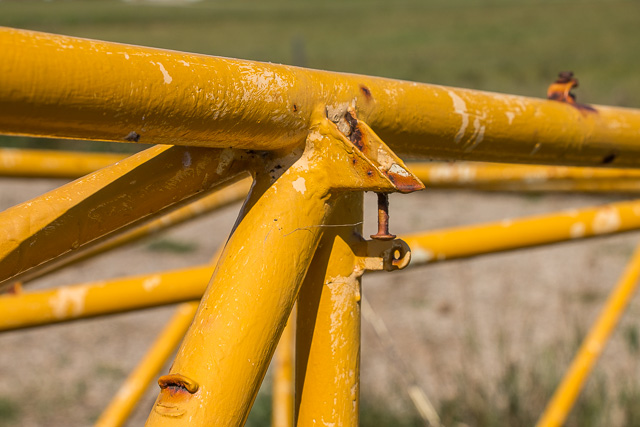
Frame details.
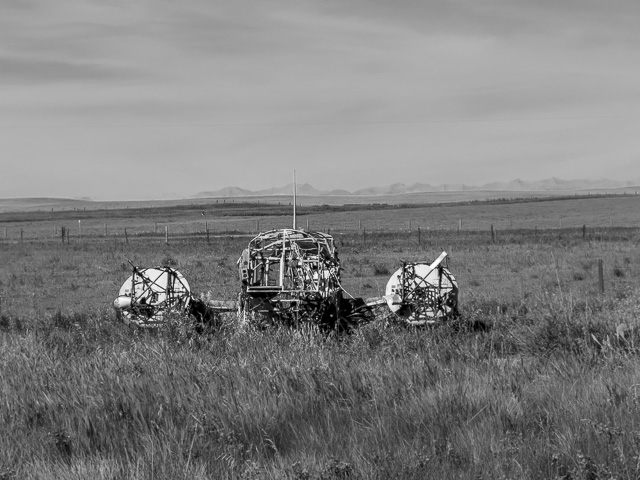
Distant mountains beckon.
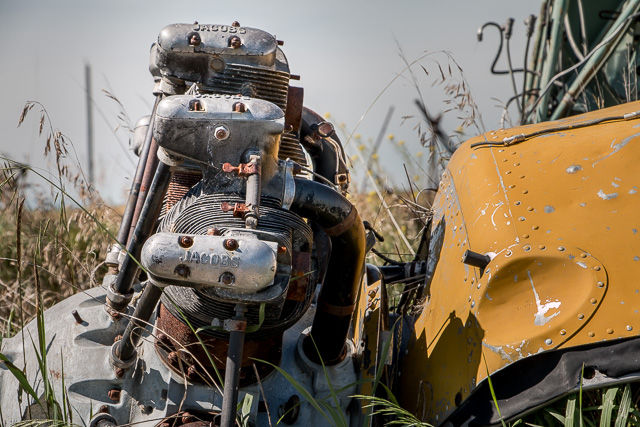
A Jacobs Radial Engine, one of two per plane.
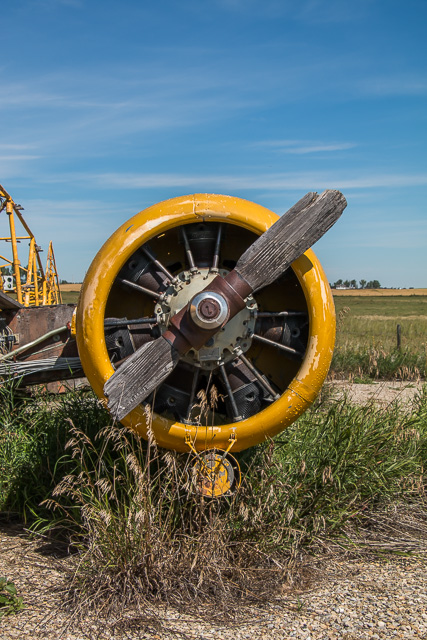
There were over eleven thousand Ansons produced.
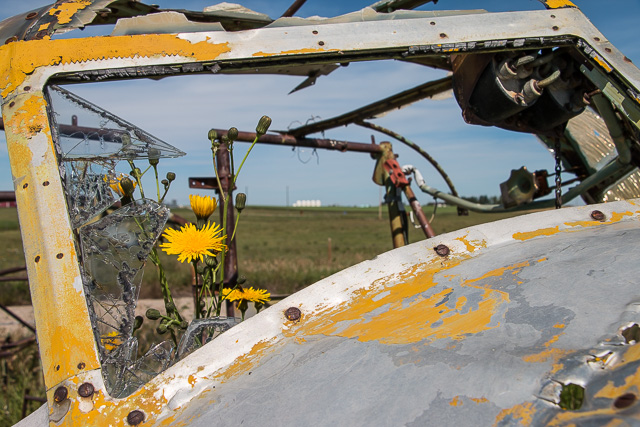
These aircraft were used for the Commonwealth Air Training Plan.
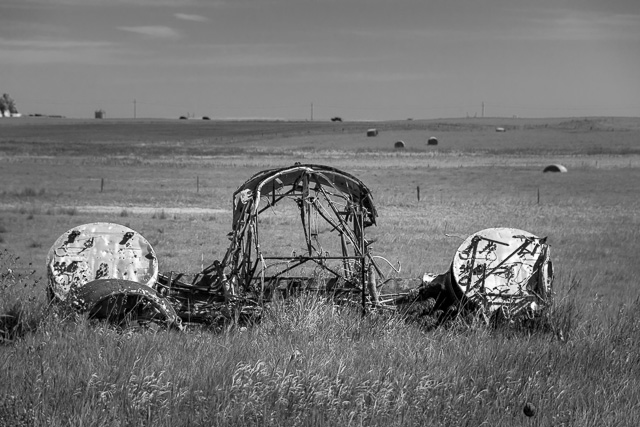
Ansons were made in both Canada and the UK.
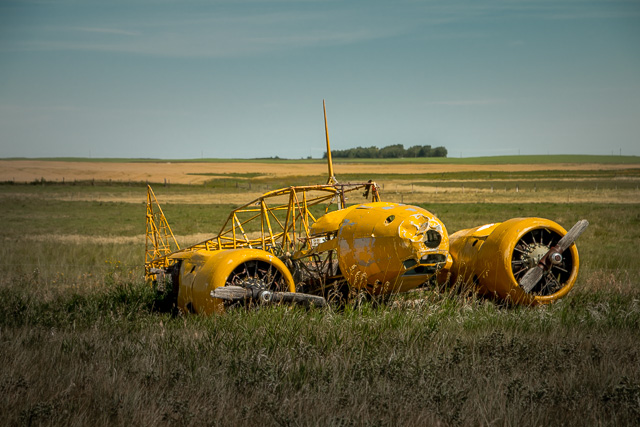
The most complete airframe.
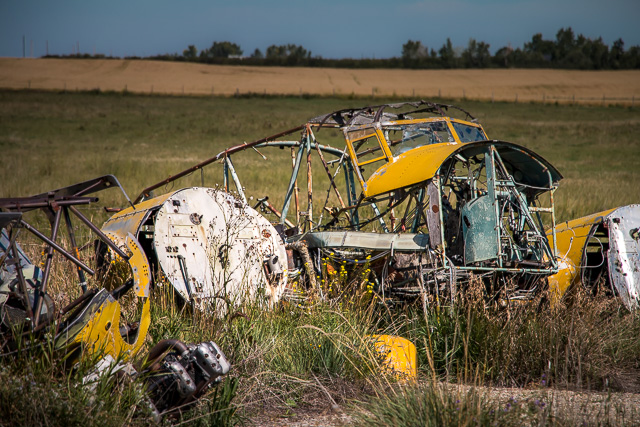
The Gravitas display was completed in 2009.
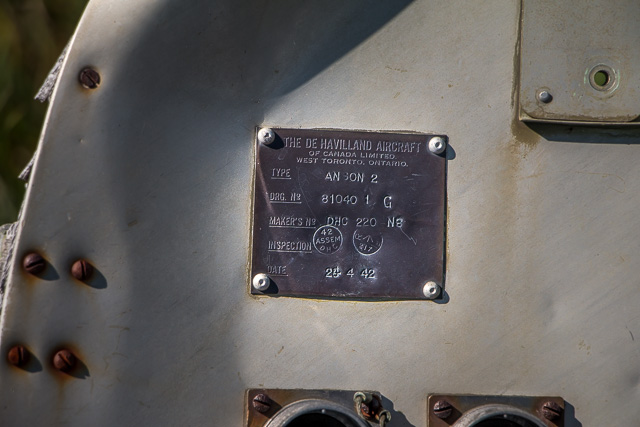
A makers plate.
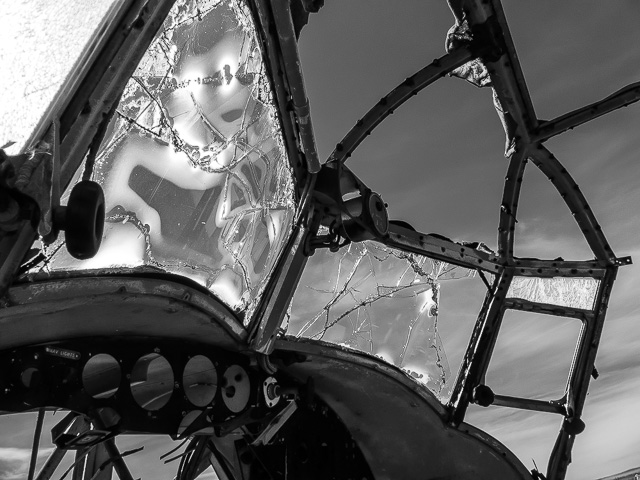
We wonder, how many pilots learned to fly in this very cockpit?
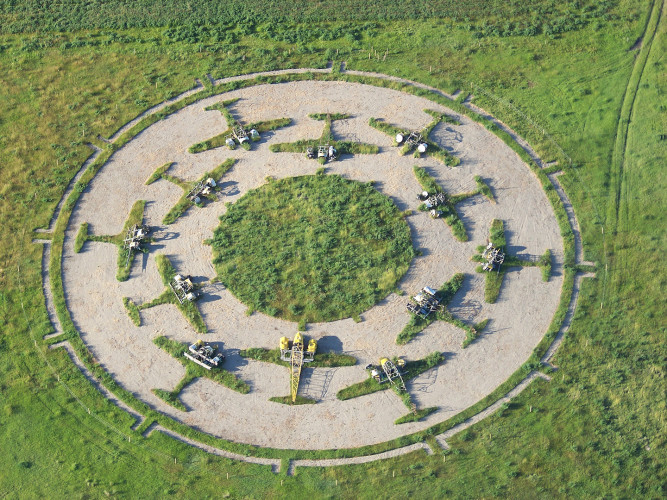
In all its glory, from the air – photo Alex Robinson.

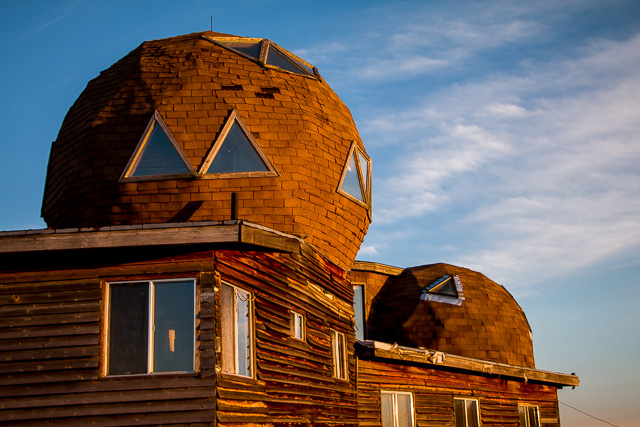
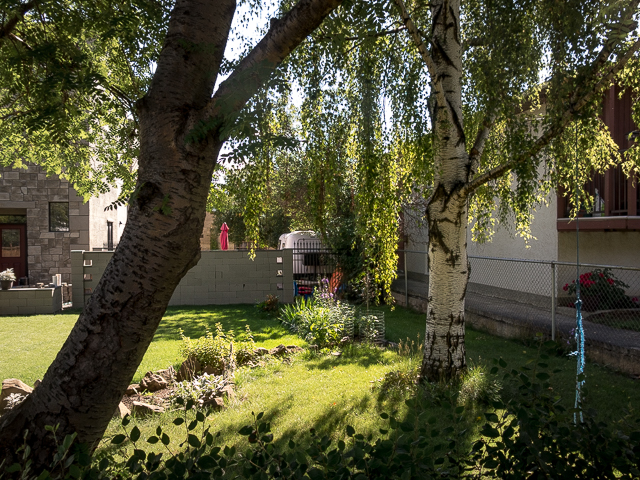
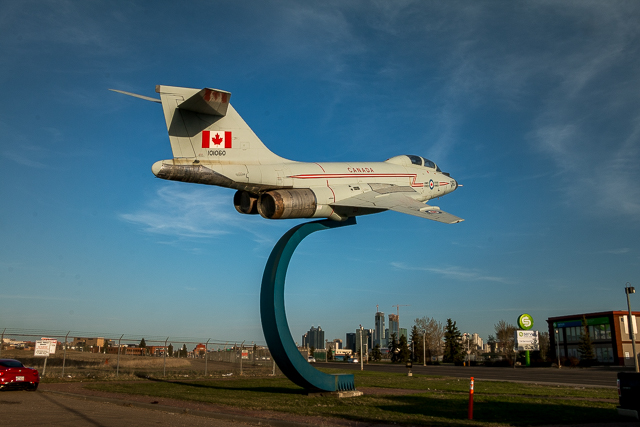
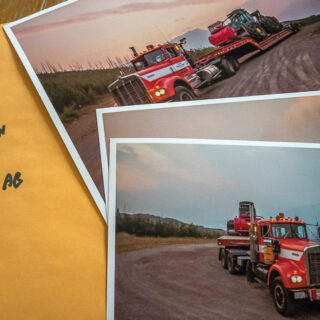
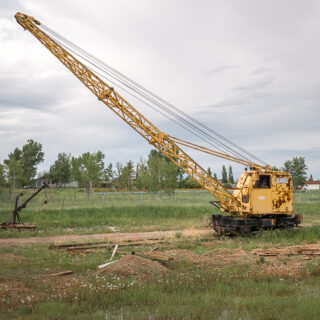
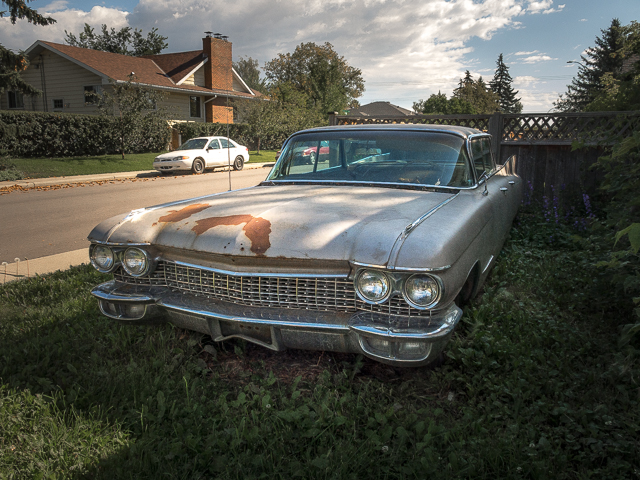
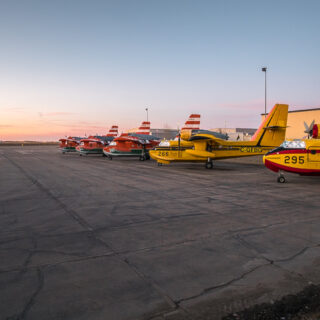
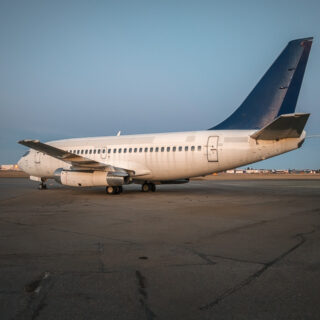
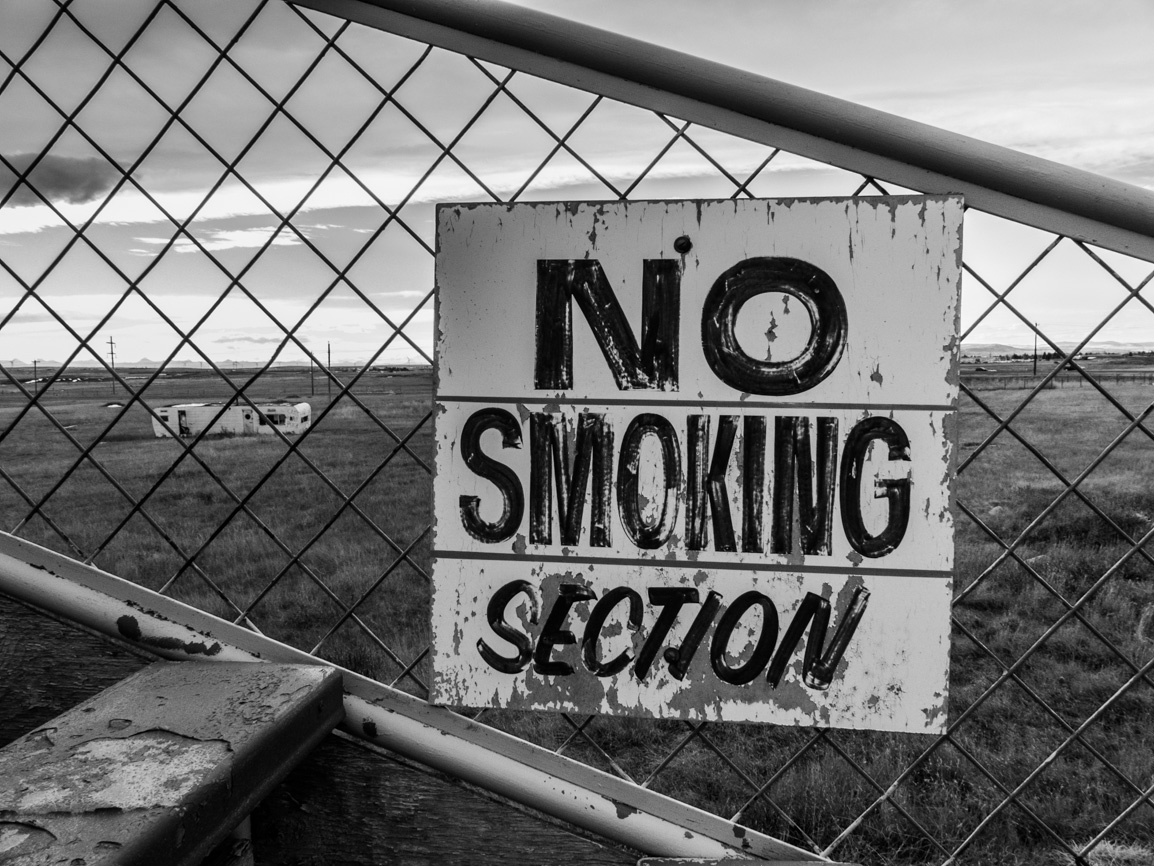
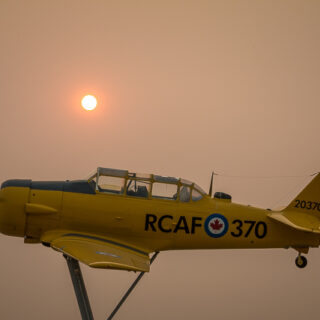
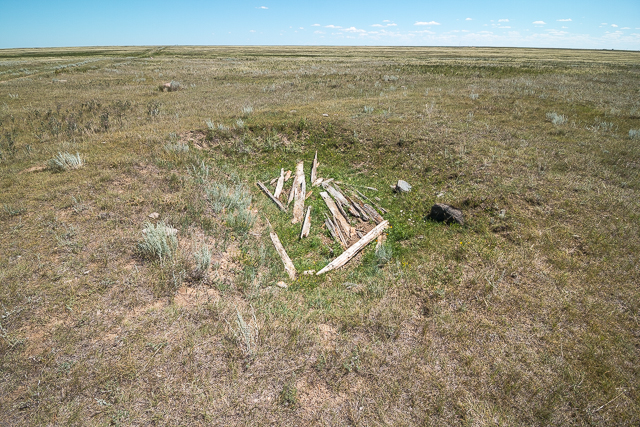
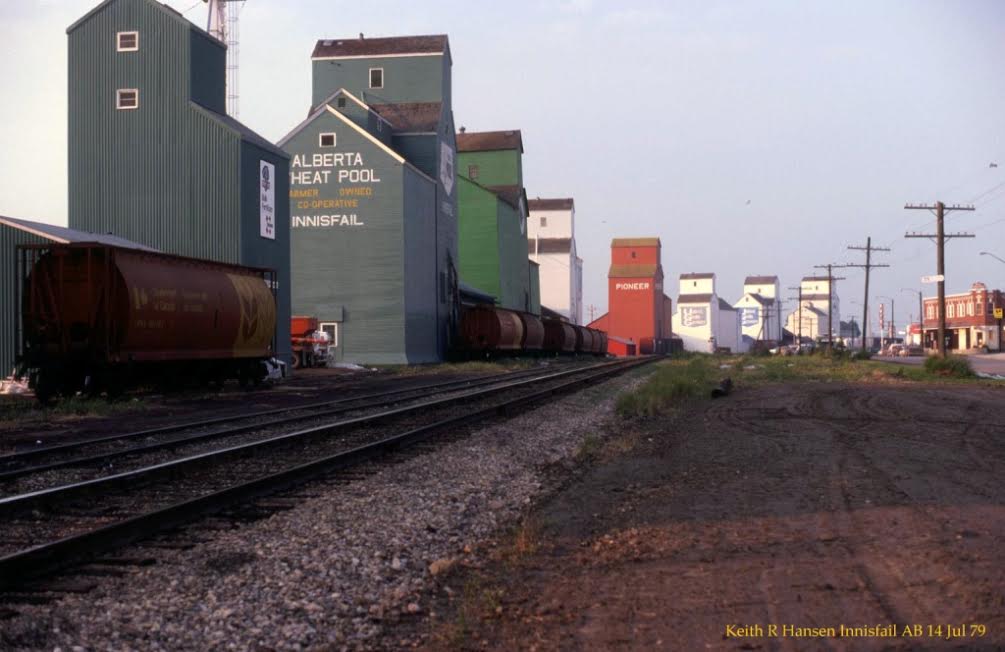
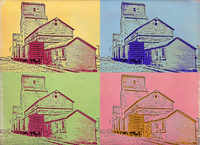






no words – just WOW
How interesting is that!
(via Facebook)
My uncle trained as a navigator/bombardier in an Anson.
Oh that’s cool. It was a valuable teaching tool. No could say otherwise.
(via Facebook)
This work of art is brilliant!
There’s nothing like it! Agreed, a stroke of genius.
Pics are amazing Chris and Connie!
Glad they motivated you to comment. I wish more people would do the same. Every comment and share helps our cause.
Very nicely photographed!
Thank you, but the subject gets the credit!
(via Facebook)
My father was at one near Yorkton during the war. They were scattered all over the prairies…
I bet there’s still a lot of them out there. Thanks for commenting.
My Dad trained on these in Canada before coming back to fight in 44-45. He was a navigator.
Awesome! These trainers were so important.
Art is great and appreciate the sentiment but really this would be better off preserved under cover. These airframes will only ever rot away.
If you read the article you’d see these planes have been stripped of useful parts, and if not part of this art display would likely have been scrapped.
My great-grandfather did some hours in those. Later went on to fly bombers but died in the war.
His service is appreciated.
(via Facebook)
Several @Brandon. One is maybe operable?
Interesting. At a museum I resume?
One of the many unsung hero aircraft of the war.
Agreed. They didn’t have the romance of a fighter or bomber, yet their contribution to the war effort was no less important.
Ahhhhh I like these shots Chris!
It was an inspiring place to shoot! Give credit to the subject, they made the show.
(via Facebook)
The location of this would be of interest of the Canadian war museum.
I bet they already know about it since it’s connected to the Nanton Bomber Command Museum.
(via Facebook)
Wow! That would of been neat to explore up close!
It was super cool. This is why we do what we do.
Very well set up! I’ve always been fascinated with those old airplanes and, with so many picked up by farmers in the region, had the opportunity to actually see them first hand. I do have to admit that I frown on them sitting outside in the elements. At the same time, I appreciate the work and the detail that has gone into a work of art like this one; so there has to be a trade-off. I need to visit this place…
Many of these old planes survive account of farmers. Bless their frugal souls! Keep in mind, they’ve been striped of useful parts which will be used in the restoration of other Ansons. And whether here or in the museum bone yard, they’d be outside anyway.
My wife’s parents have two of these still on the farm not in very good shape.
Interesting. I wonder how many there are still out there languishing in some farmer’s back field? I bet more than we might think.